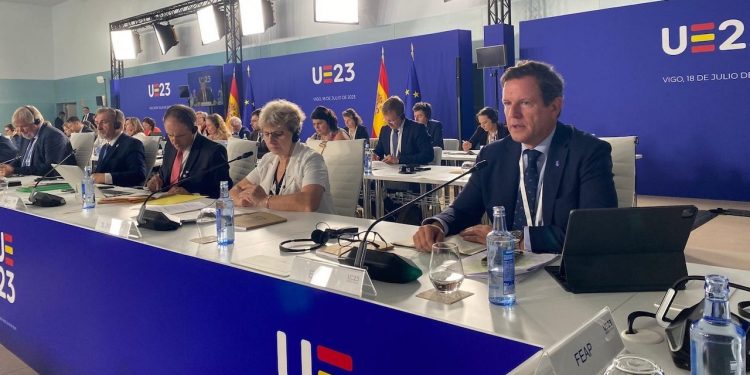Putting forward its point of view to an informal meeting of EU fisheries ministers, the European Economic and Social Committee (EESC) has stated that the potential costs of decarbonising Europe’s fisheries are ‘enormous’ and fraught with additional obstacles.
According to Javier Garat, Secretary General of Cepesca and President of Europêche, who attended the meeting, the challenge is ‘how to keep alive an essential sector for European food security by supplying a high-value animal protein with one of the lowest carbon footprints compared to other foods,’ while pointing out that if Europe wants to have a decarbonised and competitive fishing fleet (73,716 vessels) , which ensures food security for Europeans compared to the fishing capacity of the rest of the world (4.1 million vessels, of which 546,000 are Chinese), an emergency fund is going to be needed for this process to have any realistic hope of success.
The average age of European fishing vessels is 31.5 years, making many vessels impossible to adapt, in addition to which new technologies requires up to four times the space of conventional systems – and the CFP presents contradictory standards with gross tonnage capacity restrictions, which preclude allocating the space needed for future forms of propulsion.
The meeting was reminded that CO2 emissions from all the world’s fishing vessels would represent in 2020 between 0.1% and 0.5% of global anthropogenic CO2 emissions (data from the United Nations Conference on Trade and Development –UNCTAD 2023–) and that the European fleet has already reduced these by 50% since 1990, due to the reduction in the number of vessels and the investments made by vessel operators towards sustainability and energy efficiency.
Javier Garat explained to the ministers that the sector has already made significant progress on the path to decarbonisation, including with the use of selective fishing gear and reducted seabed contact, which translates into lower fuel consumption and fewer emissions, progressive adoption of diesel-electric propulsion, efficient propellers and cooling systems and participation in circular economy programs.
According to EESC, the decarbonisation process must be tackled with an adequate and realistic calendar with technological, logistical and legislative advances, developing adequate supply infrastructures in Europe and in third countries. Otherwise, EESC points out, this would disproportionately increase both costs, which would make fish a luxury item, as well as leading to business losses, instability and unemployment.
According to the EESC, ‘the cost of the transition must not be tolerable for employers and workers in the different maritime sectors or leave anyone behind.’
EESC points out that the development and global availability of alternative green technologies, new fuels and carbon-neutral energy sources is practically non-existent, and in the short term, the most realistic measures are likely to be via systems such as hybrid engines and advanced alternative fuels not produced from food and fodder crops.
Its viewpoint is that alternative propulsion systems, such as liquefied natural gas (LNG) or hydrogen require three and four times more storage space on board compared to conventional fuel, respectively, which is in direct conflict with the gross tonnage capacity restrictions that exist in the EU. This calls for a re-think of Europe’s definitions of fishing capacity.









